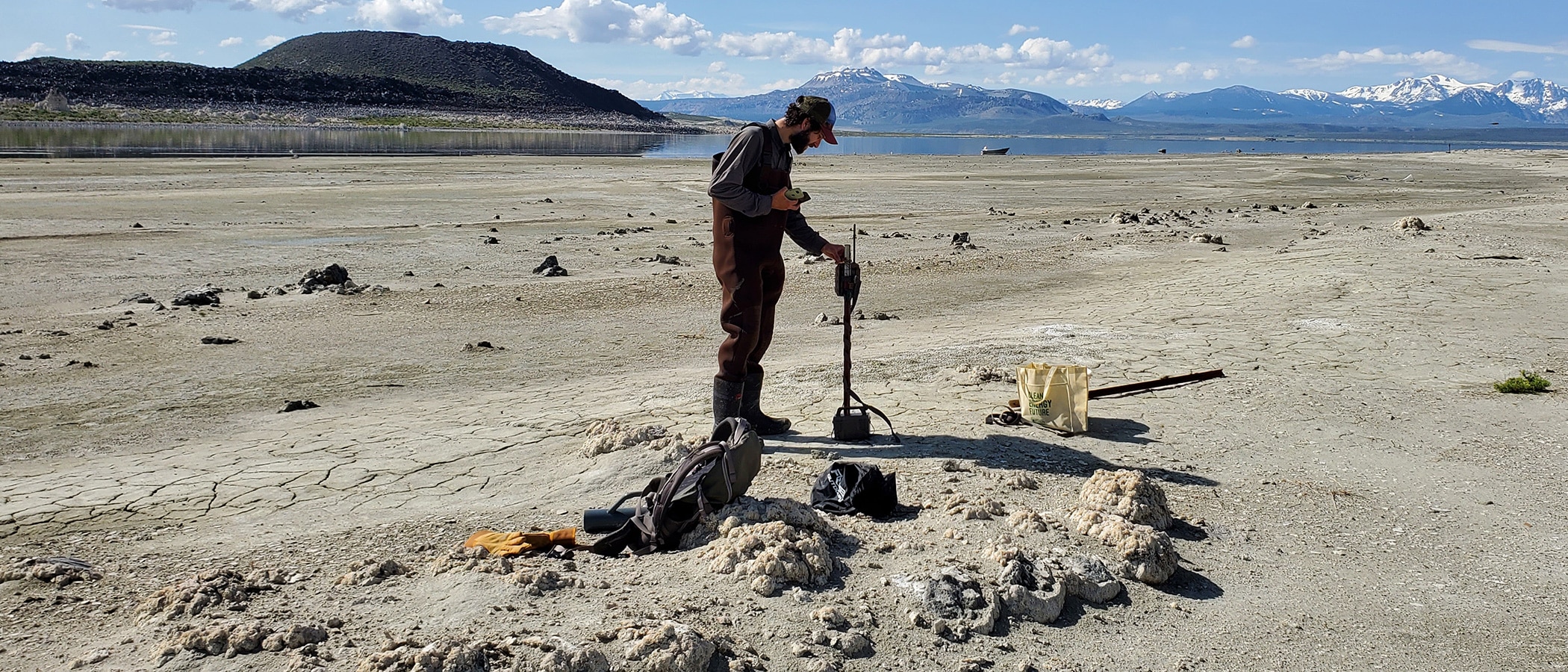
As Mono Lake rose this year it submerged large sections of the exposed landbridge between Negit Island and Black Point, providing a better buffer between coyotes and thousands of nesting California Gulls. The winter brought so much precipitation, runoff , and resulting lake level increase that the Mono Lake Committee shelved plans to install a temporary electric fence on the landbridge to protect nesting gulls.
Instead, after consulting with Point Blue Conservation Science, Committee staff set up wildlife cameras on both sides of the landbridge to monitor coyote activity before and during the nesting season as the lake rose. No coyotes were detected. In September, a post-nesting season survey of the islands did not find any evidence of coyote predation or presence, either.
Twain Islet, located just north of Negit Island, is home to the largest concentration of nesting gulls at Mono Lake. California Gulls used to nest primarily on Negit Island until the landbridge first connected in the late 1970s and early 1980s. Coyotes reached Negit at that time and the gulls have yet to re-establish the colony. In 2016 coyotes reached Java Islet next to Twain and forced the abandonment of 400 nests; for the coyotes, Twain was a probable next stop. The following winter the Committee installed a solar-powered electric fence on the landbridge, stopping coyotes from reaching the gulls the following spring and summer.
The Committee was prepared to install the fence once again this year, and emergency drought funding from the California Department of Fish & Wildlife was secured by the Committee to fund the effort. While the electric fence kept coyotes away once before, it is a temporary fix that provides no guarantees. The record-setting winter of 2023 arrived just in time for the gulls. The most effective long-term solution is to raise Mono Lake nine feet higher to its Public Trust lake level of 6392 feet, fully submerging the landbridge and ending land predator access—the most immediate and recurring threat to the viability of California Gulls at Mono Lake.
This post was also published as an article in the Fall 2023 Mono Lake Newsletter. Top photo by Bartshe Miller.
